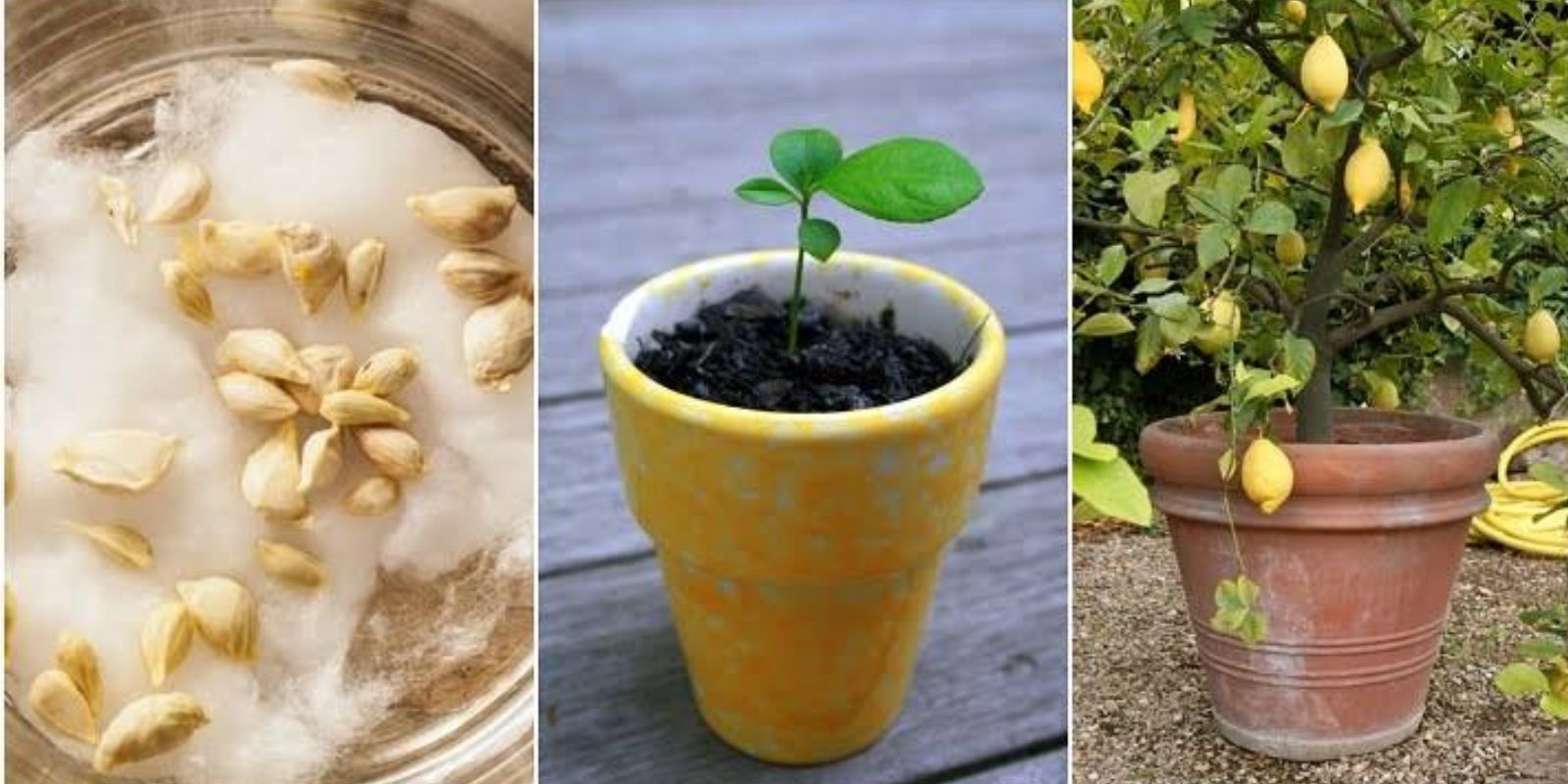In today’s world of eco-conscious living and sustainable practices, there’s something truly rewarding about growing your own plants at home. If you’re a fan of citrus, why not start with a lemon tree? Lemon seeds, often discarded without a second thought, hold the promise of a lush, productive tree that can brighten up your garden or indoor space. This comprehensive guide will take you through the steps to grow a lemon tree from seeds and provide valuable tips to ensure its success.
Why Grow a Lemon Tree from Seeds?
Growing a lemon tree is an exciting and fulfilling project for many reasons:
- Eco-Friendly: Repurposing seeds reduces kitchen waste.
- Cost-Effective: A store-bought lemon tree can be expensive, but starting from seeds is virtually free.
- Fresh Produce: Imagine picking your own organic lemons for cooking, beverages, or natural remedies.
- Decorative Value: Lemon trees are visually appealing, adding a tropical touch to your home or garden.
- Aromatic Leaves and Blossoms: The fragrant flowers and leaves of a lemon tree can freshen your surroundings.
Whether you’re an experienced gardener or a beginner, this project is a wonderful way to connect with nature.
Steps to Grow a Lemon Tree from Seeds
1. Collect Fresh Lemon Seeds
Choose a fresh, organic lemon for your seeds. Organic fruits are not treated with chemicals that might hinder germination. Carefully slice the lemon and extract the seeds. Select seeds that are plump and intact, discarding any that appear damaged or dried out.
2. Clean and Prepare the Seeds
Rinse the seeds thoroughly to remove any sticky pulp, as leftover fruit can cause mold during germination. After rinsing, soak the seeds in warm water for 8–12 hours. This softens the outer coating and improves germination rates.
3. Prepare the Planting Medium
Select a small pot with drainage holes and fill it with well-draining, nutrient-rich soil. A mix of potting soil, compost, and sand works best for citrus plants. Alternatively, you can use seed-starting mix to encourage strong root growth.
4. Plant the Seeds
Plant each seed about 1/2 inch deep in the soil. Ensure the pointed end of the seed faces downwards. Cover lightly with soil and gently pat it down to secure the seeds in place.
5. Provide Moisture
Water the soil thoroughly after planting, ensuring it’s evenly moist but not waterlogged. Cover the pot with plastic wrap or a clear plastic bag to create a greenhouse effect, trapping warmth and humidity to speed up germination.
Make a few small holes in the plastic wrap for air circulation to prevent mold growth.
6. Find the Perfect Spot
Lemon seeds need warmth and light to germinate. Place the pot in a sunny spot, such as a windowsill that receives at least 6–8 hours of sunlight daily. If natural light is limited, consider using a grow light.
7. Monitor Germination
Germination typically takes 2–3 weeks. During this period, check the soil’s moisture level regularly and mist it with water if it feels dry. Once the seedlings emerge, remove the plastic covering to allow proper air circulation.
8. Transplant to a Larger Pot
Once the sapling reaches a height of 4–6 inches and has several sets of leaves, it’s time to transplant it into a larger pot. Choose a pot that is at least 10–12 inches in diameter to provide ample space for root development.
When transplanting, handle the delicate roots with care to avoid damage.
9. Ongoing Care for Your Lemon Tree
- Watering: Lemon trees prefer consistently moist soil, but they are sensitive to overwatering. Allow the top inch of soil to dry out between waterings.
- Light: Provide full sun for optimal growth and fruit production. Place your tree outdoors during summer if possible.
- Fertilizing: Use a balanced fertilizer specifically formulated for citrus trees. Apply it every 4–6 weeks during the growing season (spring and summer). Reduce fertilization during fall and winter.
- Pruning: Regularly prune your tree to encourage healthy growth and shape it. Remove dead or damaged branches and thin out crowded areas.
10. Encouraging Flowering and Fruit Production
Lemon trees grown from seeds may take several years (3–5 years) to produce fruit. To encourage flowering, provide optimal light, water, and nutrition. If growing indoors, pollinate the flowers manually using a small brush to mimic the work of bees.
Troubleshooting Common Issues
- Yellowing Leaves: This often indicates overwatering or a nutrient deficiency. Check soil moisture and adjust your fertilizer regimen.
- Pests: Citrus trees can attract pests like aphids and spider mites. Use insecticidal soap or neem oil to manage infestations.
- No Flowers or Fruit: Ensure your tree receives sufficient sunlight and nutrients. Remember, patience is key, as seed-grown lemon trees take time to mature.
Benefits of Growing Your Own Lemon Tree
- Health and Wellness: Lemons are rich in vitamin C, antioxidants, and other nutrients that support immunity and overall health.
- Cost Savings: Avoid the expense of store-bought lemons by growing your own endless supply.
- Sustainability: Reduce your environmental impact by cultivating lemons at home.
- Aesthetic Appeal: Lemon trees are not only productive but also add charm and greenery to any space.
Interactive Tip
Growing a lemon tree from seed is a rewarding experience, but everyone’s journey is unique. Share your progress, photos, and tips in the comments below! Have questions? Let’s discuss and grow together.
Final Thoughts
Cultivating a lemon tree from seeds is a wonderful way to connect with nature while enjoying the benefits of fresh, homegrown fruit. From the first sprout to the day your tree bears fruit, each stage is a testament to the power of patience and care. By following these steps, you can create your own citrus oasis at home, bringing a touch of the tropics to your garden or living space.
🌱 Why not start today? Let those lemon seeds you were about to toss become your next gardening success story!

